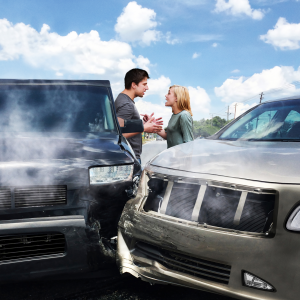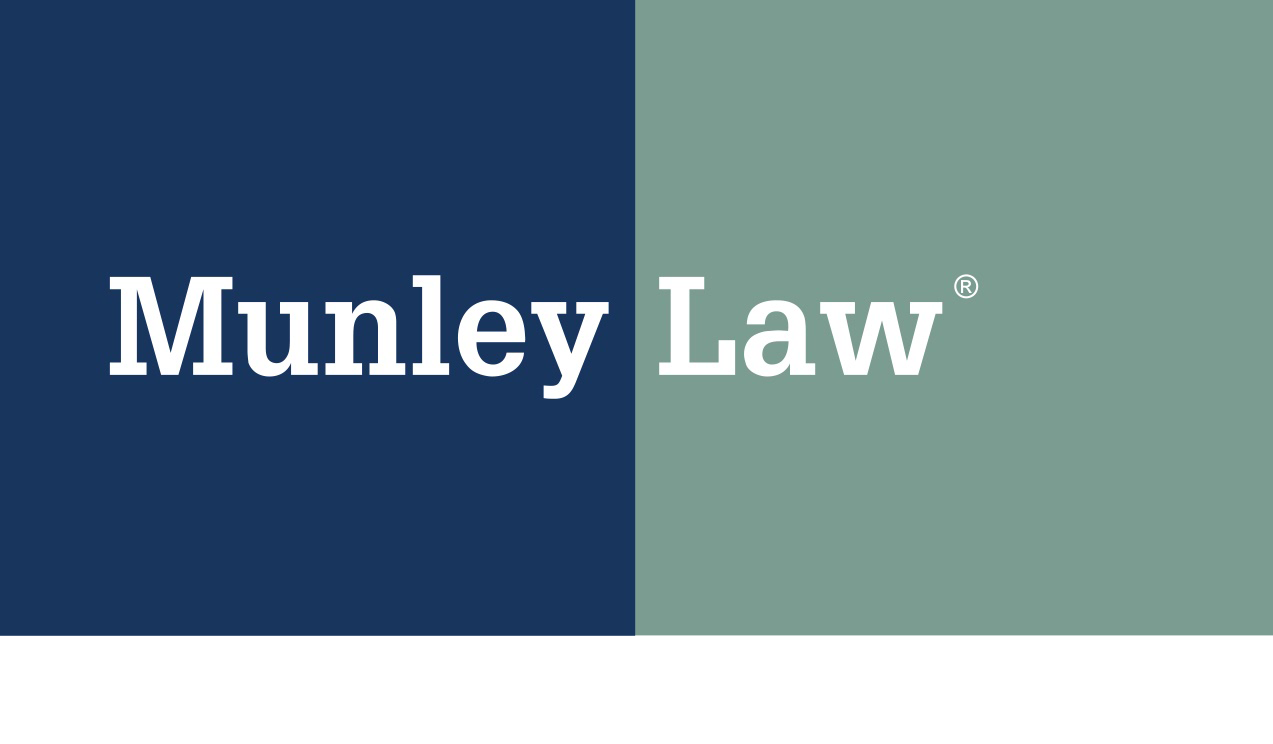How Does an Insurance Company Decide Who Was at Fault for a Scranton Car Accident?
Who Determines Who is At Fault After a Car Accident?
Imagine you are pulling out of a driveway, with your view partially obscured by a snowbank. As you do, another car comes around the corner and hits you. Who’s at fault for the car accident?
The answer may not always be that easy to determine–but answering it may be crucial in deciding who is ultimately responsible for paying for medical expenses and vehicle damage. Answering the question of who is at fault for auto accidents can also change depending on who is answering it, the traffic laws applicable to the situation, or the state in which the auto accident occurs. It can get even more complicated when multiple vehicles are involved.
While police and insurance companies may weigh in with their own assessment of who is at fault in car accidents, it is often a good idea to hire an experienced car accident lawyer who can advocate for you and help guide you through the process of seeking maximum compensation from those responsible for a car accident.
How is Fault Determined for a Car Accident?
 Fault refers to who was responsible for a car accident occurring. The process of how fault is determined in a car accident starts with the drivers involved. When you hit or are hit by another vehicle, often it is only natural to speak with the other driver and try and understand together what just occurred and why.
Fault refers to who was responsible for a car accident occurring. The process of how fault is determined in a car accident starts with the drivers involved. When you hit or are hit by another vehicle, often it is only natural to speak with the other driver and try and understand together what just occurred and why.
However, this is often a mistake. As a driver, you are not experienced enough to understand the law and make a sound judgment about whether or not you or the other driver was at fault. Moreover, you could hurt your ability to recoup accident-related expenses if you admit fault to the other driver or to the police.
It is a better idea to simply exchange information with the other driver, getting their license number and contact information, as well as recording the make and model of their vehicle. You should also take pictures of any damage to your car or the other vehicle, and make notes for yourself about how, where, and when the accident occurred.
At no point should you admit fault to the other driver–even if you believe that you were responsible for the car accident. You are simply not in a position to make that judgment.
The Role of Police in a Car Accident
Oftentimes, after the drivers themselves, a police officer will assess the accident scene and make their own judgment about what occurred and why. A police officer may question you and the other driver, as well as other witnesses on the scene, make note of the damage to the vehicles, draw a sketch of how the accident occurred, and note any compounding factors such as weather or darkness.
They will put all of this information into a police report, which can provide valuable evidence to help determine fault. You should definitely make sure you obtain a copy of the police report and read it thoroughly to see what information is contained within it.
However, police are not responsible for determining fault. That determination falls to insurance companies, and potentially to a judge or jury.
How Do State Laws Affect the Fault Determined By Car Insurance Companies?
 After a car accident occurs, both drivers involved usually file an auto insurance claim with their insurance company. The claim goes to an insurance adjuster, whose job it is to investigate the accident and determine who is at fault in order to settle the insurance claim.
After a car accident occurs, both drivers involved usually file an auto insurance claim with their insurance company. The claim goes to an insurance adjuster, whose job it is to investigate the accident and determine who is at fault in order to settle the insurance claim.
When car insurance companies determine fault, first they must take into account the state laws that govern negligence. The driver that was negligent is, in general terms, the one who is responsible for the car accident. However, determining fault is not always so simple.
In some cases, both drivers may bear some responsibility for an accident. For example, one car may stop suddenly short, and another car hit it from behind. How an insurance company determines fault may depend on how vehicles were obeying traffic laws or any mitigating factors such as bad weather conditions.
In these cases, an insurance adjuster for each driver’s insurance company will examine the facts of the accident, including the police report, if any, that was filed at the scene.
What If Both Parties Are Partially At Fault?
As car insurance companies determine fault, they may also conduct their own investigations, with an insurance adjuster interviewing both drivers and other witnesses mentioned in the police report or provided by drivers, and carefully considering the weather, visibility, and other factors that may have contributed to the auto accident.
After both insurance companies investigate, they may each assign a percentage of the blame to each driver, say 60 percent to one driver and 40 percent to the other, to mutually determine fault.
Often the insurance companies decide fault among themselves in assigning fault for the accident. If not, then the insurance companies usually take their disagreement to arbitration, relying on a private company to negotiate between them and make their own fault determination.
After those percentages are assigned, however, the details of how car insurance companies pay claims are highly dependent on state laws.
No-Fault States
Some states are no-fault states, which means that no matter who caused the accident, each driver files a car accident claim for medical expenses with their own auto insurance company. In a no-fault state, state laws require each car insurance company to offer personal injury protection in an insurance policy that will cover medical expenses for their driver.
Drivers are required to carry no-fault coverage that will provide personal injury protection to compensate them when a car accident occurs. Even in a no-fault state, however, the car accident claim only covers medical expenses, and not repair bills for vehicle damage, which is considered separately according to laws governing negligence and is not included in no-fault coverage.
Comparative Negligence
Some states operate under the principle of comparative negligence, sometimes called comparative fault or pure comparative negligence. Rather than each insurer covering medical expenses, as in a no-fault state, both medical expenses and property damage are compensated by the insurance company according to the percentage by which each driver is at fault.
If insurance companies determine that the other driver is 70 percent at fault for the auto accident, while you are 30 percent responsible, then the other driver’s insurer will pay money for 70 percent of your medical bills and property damage, while you or your insurer handles coverage for the rest depending on the details of your insurance policy.
States using pure comparative negligence include Alaska, Arizona, California, Florida, Kentucky, Louisiana, Mississippi, Missouri, New Mexico, New York, Rhode Island, and Washington.
Modified Comparative Negligence
Rather than pure comparative negligence, some states use a variation called modified comparative negligence. In these states, insurance companies determine which driver was more than 50 percent at fault.
That driver’s insurer is then responsible for paying the full amount of medical bills and property damage expenses for the other party. That means if you are the at-fault driver, then you or your insurance is responsible for paying all of your costs–even if you were only 51 percent responsible.
A majority of states in the US use modified comparative negligence, including Arkansas, Colorado, Connecticut, Delaware, Georgia, Hawaii, Idaho, Illinois, Indiana, Iowa, Kansas, Maine, Massachusetts, Michigan, Minnesota, Montana, North Dakota, Nebraska, Nevada, New Hampshire, New Jersey, Ohio, Oklahoma, Oregon, Pennsylvania, South Carolina, Tennessee, Texas, Utah, Vermont, West Virginia, Wisconsin, and Wyoming.
Contributory Negligence
A few states operate by the opposite principle, known as contributory negligence. Also called pure negligence, this means assigning fault to both drivers if they each contributed in any way to the accident.
In other words, even if you are only slightly at fault for the car accident, you would not be entitled to receive any compensation from the other driver’s insurer.
The states that use contributory negligence are Alabama, Maryland, North Carolina, South Dakota, and Virginia, as well as Washington, D.C.
What If You Disagree With the Insurance Companies?
 Most car accident cases are resolved through a claim settlement between the car accident victim and insurance companies–either their own auto insurance company or the other driver’s insurance company.
Most car accident cases are resolved through a claim settlement between the car accident victim and insurance companies–either their own auto insurance company or the other driver’s insurance company.
That doesn’t mean you have to accept the first claim settlement that an auto insurance company offers you, however. You may find that the amount offered is insufficient to cover your repair bills and medical expenses, which can often be the case for a car accident victim who requires extensive medical attention. Even in a no-fault state, you may disagree with the amount offered for property damage.
Or you may disagree with the way that the insurance adjuster determines fault for the auto accident. In that case, you have the right to file a car accident case in court.
Going to Small Claims Court
If the amount you are seeking is small, generally under a few thousand dollars, you can take the insurance company or other driver to small claims court, where it is possible to represent yourself without an accident attorney.
This court may be appropriate for example, in a case in which there was only property damage and not bodily injury. In more complicated cases, you should consult a trained car accident lawyer who can help you argue the case to earn maximum compensation.
Why You Should Hire an Experienced Car Accident Lawyer
 When a car accident case makes it to court, the parties and their lawyers will argue the case in front of a judge or jury to make their own claims about who is at fault. The legal team may present evidence from the police report or a witness who claims differently than the way the insurance adjuster interpreted their information. Police reports are not infallible, and a legal team may call into question details in the police report contradicted by other evidence.
When a car accident case makes it to court, the parties and their lawyers will argue the case in front of a judge or jury to make their own claims about who is at fault. The legal team may present evidence from the police report or a witness who claims differently than the way the insurance adjuster interpreted their information. Police reports are not infallible, and a legal team may call into question details in the police report contradicted by other evidence.
They may also offer evidence from medical records to show that the compensation being offered is not high enough. In cases where a car accident victim requires extensive medical attention, potential medical expenses can rise to hundreds of thousands of dollars.
In addition, auto insurers may be required to pay money to the victim of a car accident for other tangible expenses such as lost wages and expenses for assistance with chores around the house; as well as intangible expenses such as pain and suffering and loss of enjoyment of life.
In these cases, an experienced car accident lawyer can help to make the arguments on your behalf to show how the other party was more at fault for an accident, or call into question the way that the insurance companies
Contact Munley Law Personal Injury Attorneys Today
If you have been injured in a car accident, contact Munley Law Personal Injury Attorneys to find out what kind of compensation you might truly be entitled to receive. For over 60 years, Munley Law Personal Injury Attorneys has represented hundreds of thousands of car accident victims throughout Pennsylvania to get the compensation needed to get them back on their feet.
Our car accident lawyers have consistently been named among the Best Lawyers in America, selected to Pennsylvania Super Lawyers, and are board certified by the National Board of Trial Advocacy. And, we get results – our lawyers have achieved numerous multi-million dollar settlements and verdicts.
Ask for a free consultation
The Scranton personal injury lawyers at Munley Law Personal Injury Attorneys care very deeply about our clients. Our compassionate attorneys and our entire staff will do everything in our power to help you during this time of need. You can count on our team—we have decades of success and satisfied clients, and we will devote all of the time and resources necessary for you to win your case.
We know you have questions but may be nervous to contact a car accident lawyer in Scranton, PA. That’s why our law firm offers FREE, no-obligation case evaluations to all accident victims. You can reach someone from our staff 24 hours a day, 7 days a week. No matter how complicated or difficult your case may be, we will review the facts and explain what legal options are available to you. Chat live, email us, or call today.









